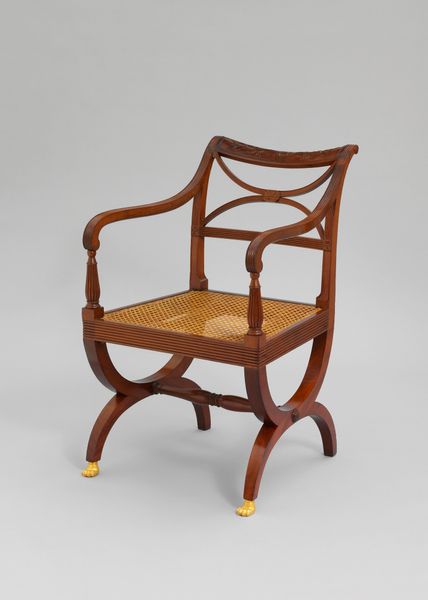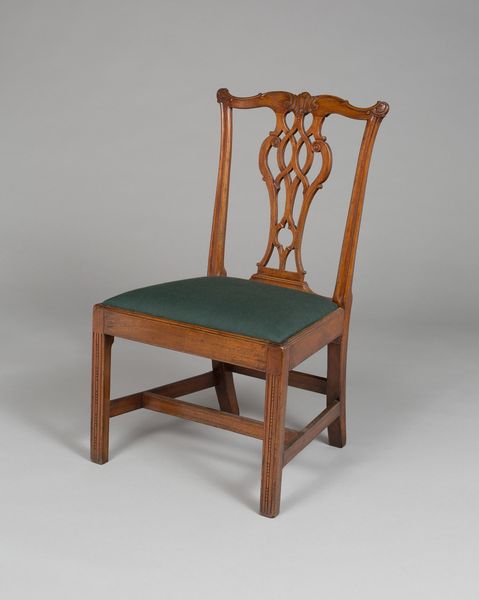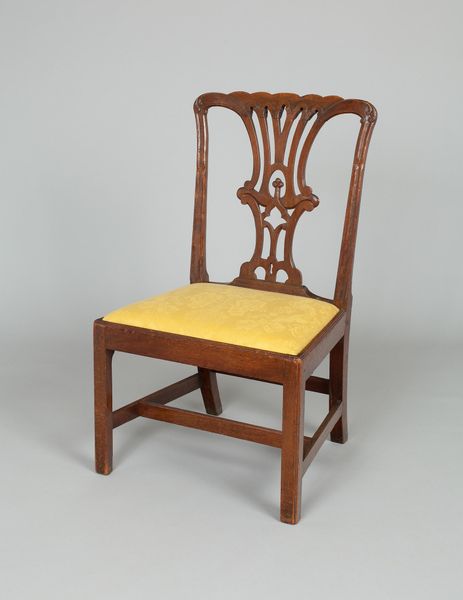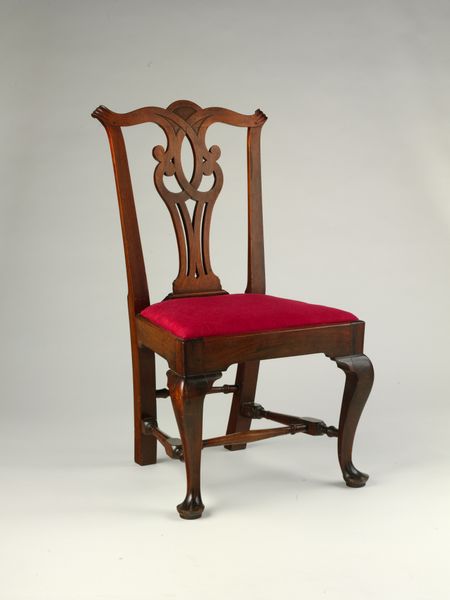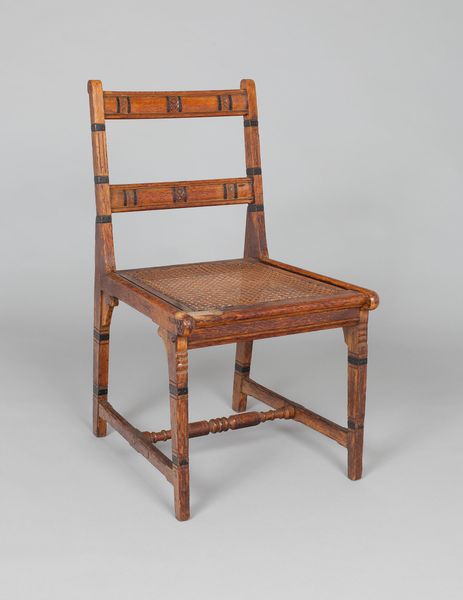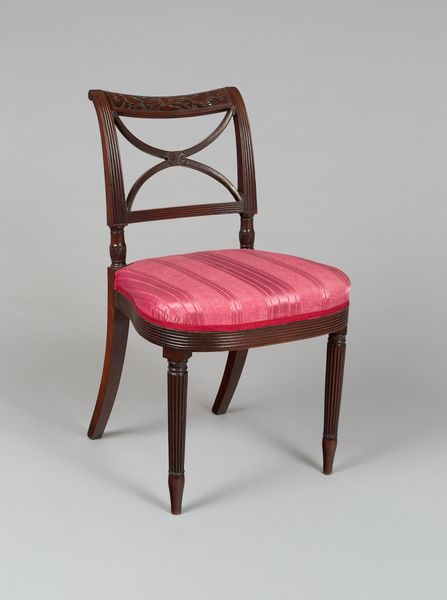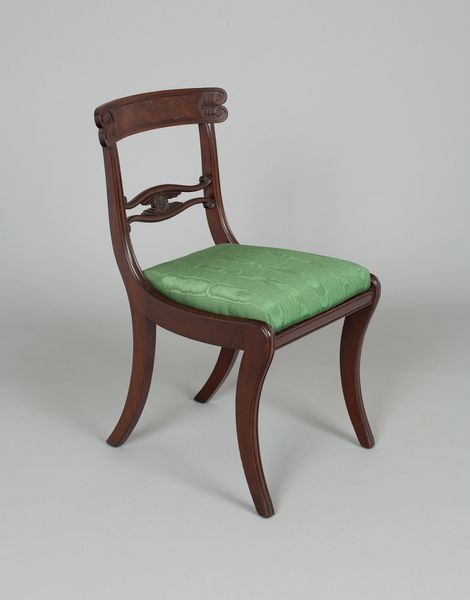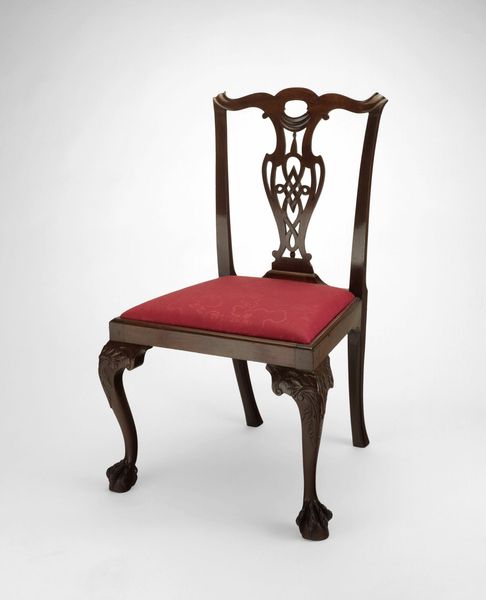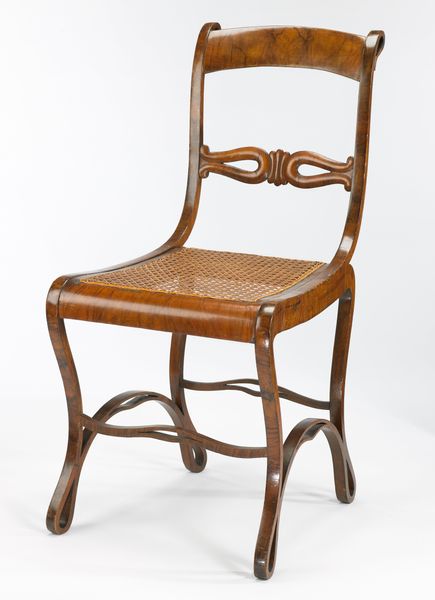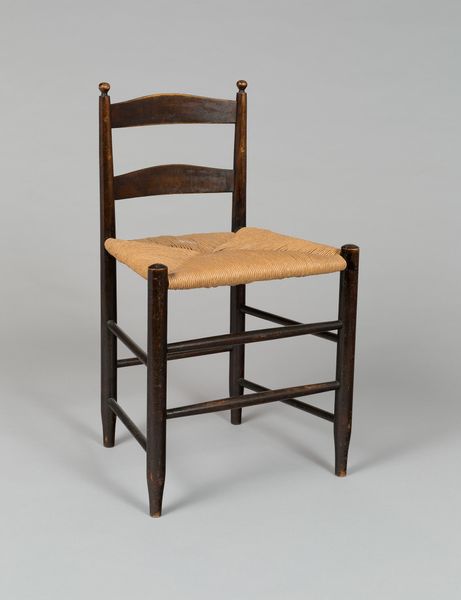
carving, sculpture, wood
#
neoclacissism
#
carving
#
furniture
#
sculpture
#
united-states
#
wood
#
decorative-art
Dimensions: 32 3/4 x 17 7/8 x 16 1/4 in. (83.2 x 45.4 x 41.3 cm)
Copyright: Public Domain
This side chair was made by Duncan Phyfe, most likely in New York sometime in the early 19th century, from mahogany, cane, and brass. The sweeping curves were achieved through hand-carving, steam-bending and lamination, processes that imbue the chair with a sense of restrained elegance. The woven cane seat speaks to the pre-industrial traditions of handcraft, while the brass feet, cast with the form of animal paws, add a touch of luxury and sophistication. Phyfe was a master of his craft, catering to the tastes of wealthy merchants and landowners. His workshop would have relied on a division of labor, with specialized craftsmen focused on particular tasks: carving, joinery, upholstery. The chair reflects a moment in which handcraft met emerging industrial practices, creating objects that spoke to both tradition and modernity, labor and class. Recognizing this context is essential to fully understanding the object.
Comments
No comments
Be the first to comment and join the conversation on the ultimate creative platform.
